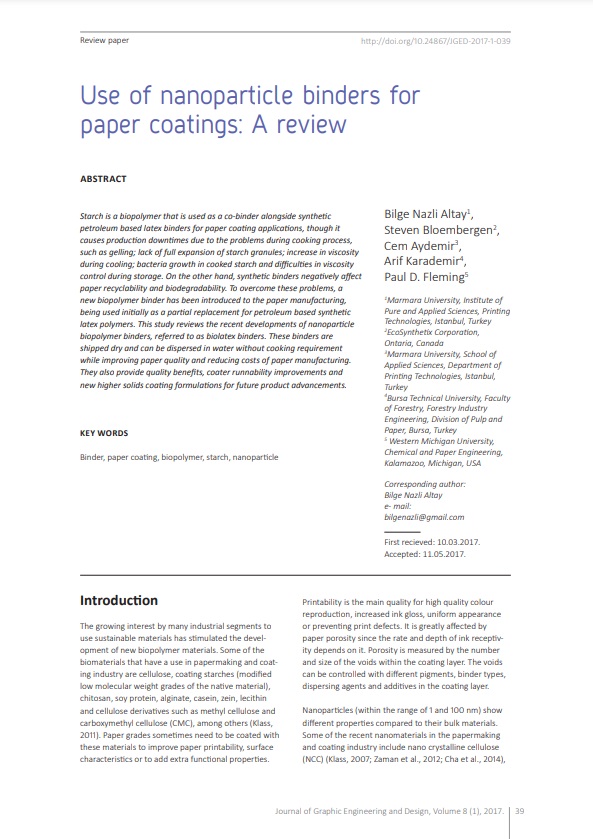
Published 2017-06-01
abstract views: 295 // Full text article (PDF): 295
Keywords
- Binder,
- paper coating,
- biopolymer,
- starch,
- nanoparticle
How to Cite
Copyright (c) 2017 © 2017 Authors. Published by the University of Novi Sad, Faculty of Technical Sciences, Department of Graphic Engineering and Design. This article is an open access article distributed under the terms and conditions of the Creative Commons Attribution license 3.0 Serbia.

This work is licensed under a Creative Commons Attribution 3.0 Unported License.
Abstract
-
Starch is a biopolymer that is used as a co-binder alongside synthetic petroleum based latex binders for paper coating applications, though it causes production downtimes due to the problems during cooking process, such as gelling; lack of full expansion of starch granules; increase in viscosity during cooling; bacteria growth in cooked starch and difficulties in viscosity control during storage. On the other hand, synthetic binders negatively affect paper recyclability and biodegradability. To overcome these problems, a new biopolymer binder has been introduced to the paper manufacturing, being used initially as a partial replacement for petroleum based synthetic latex polymers. This study reviews the recent developments of nanoparticle biopolymer binders, referred to as biolatex binders. These binders are shipped dry and can be dispersed in water without cooking requirement while improving paper quality and reducing costs of paper manufacturing. They also provide quality benefits, coater runnability improvements and new higher solids coating formulations for future product advancements.

